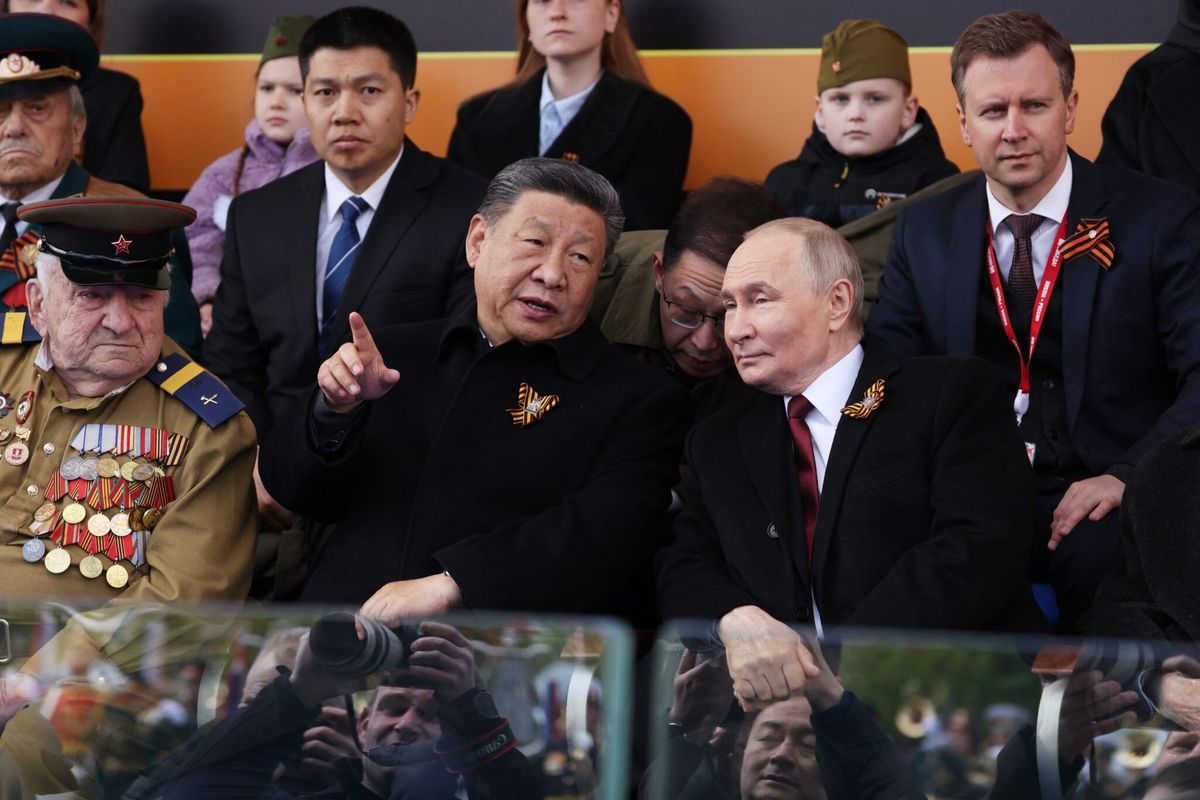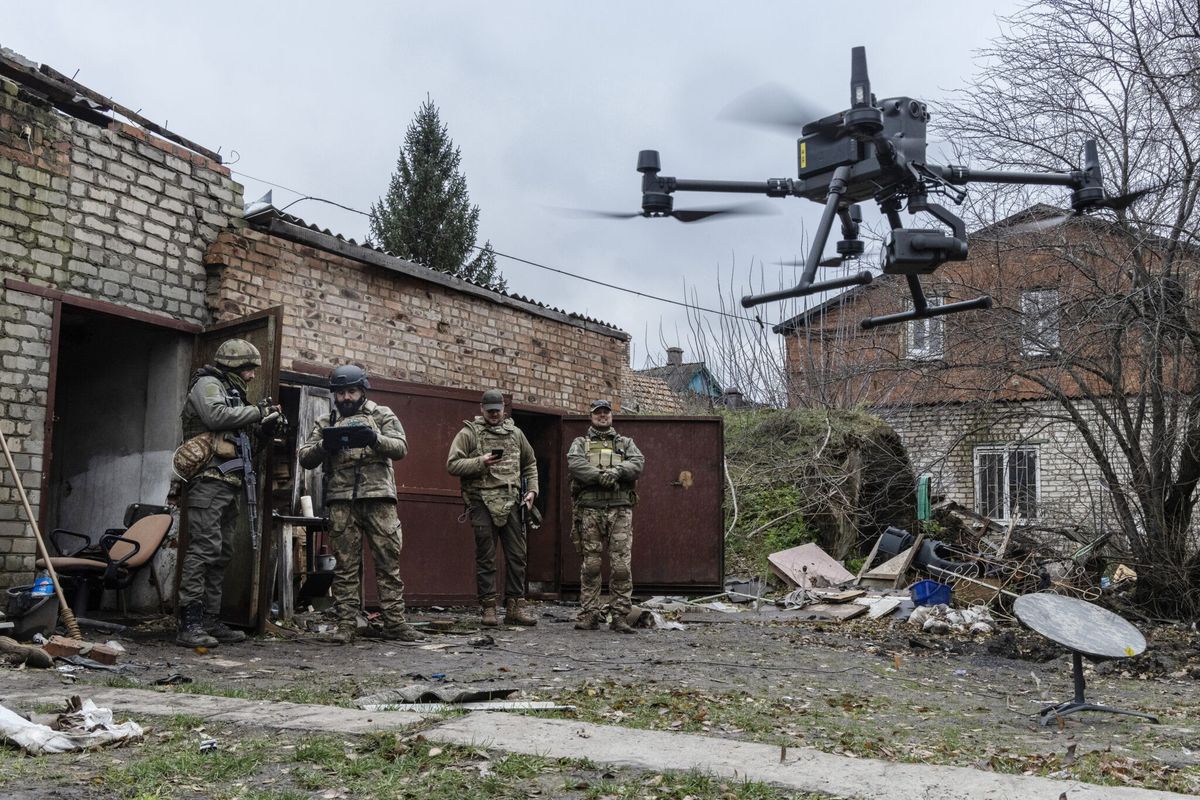SUBSCRIBER+ EXCLUSIVE REPORTING — Drones set fire to a Russian refinery in St. Petersburg. A railway bridge explodes in Siberia. Daily funerals are held in nearly all corners of the country. Russians have seen glimpses of the war against Ukraine, but no place in Russia has felt the heat of war as intensely as Belgorod, a city of some 350,000 people just 25 miles from the internationally recognized border with Ukraine.
For the last several weeks, air raid sirens have rung out almost daily in Belgorod - often several times a day - as local authorities warn of Ukrainian missile and drone attacks. Those attacks have killed dozens of people and wounded several hundred more, and regional governor Vyacheslav Gladkov said Saturday that 5,000 children have been evacuated from Belgorod as a result of the attacks. Schools and shopping malls closed last month to avoid mass casualties, and Gladkov businesses would be allowed to re-open only when "staff are trained in first aid." On Friday, a Ukrainian drone crashed into an apartment building in Belgorod, killing a man and wounding two others.
Belgorod residents reached by the exiled Russian news organization Novaya Gazeta Europe describe the city as a war zone. “You can cut the tension here with a knife,” a Belgorod resident identified only as Artyom told the news site.
Beyond the drones and missiles, Belgorod has faced a second threat - from Russian militias who oppose the Kremlin. These small groups operate from Ukraine, and at least three have made forays into the Belgorod region. One of the militias, the Freedom for Russia Legion, said on March 18 that it had taken control of the village of Gorkovsky, about 20 miles southwest of Belgorod, a claim that drew no official response from Russia. The Legion said it had destroyed dozens of pieces of Russian military equipment, including 7 tanks and 20 infantry fighting vehicles. A drone video showed what appeared to be members of the group displaying their dark blue flag in the village, then ripping down the Russian flag from the local school.
Not since World War II has fighting crossed international borders to Russian soil. But that’s changing as Ukraine acquires more weapons with longer-range capabilities, and as it tries to halt Russian military advances in Ukraine by striking at supply lines. The Russian anti-Kremlin militias are just one more ingredient in a mix that—in at least one part of the country—is posing a problem for Vladimir Putin.
“This is an effort to embarrass the Kremlin and embarrass Putin, and to demonstrate that not all is well in Mother Russia,” John Herbst, a former U.S. ambassador to Ukraine and now senior director of the Eurasia Center at the Atlantic Council, said in an interview with The Cipher Brief.
Why Belgorod?
Belgorod presents a logical target for Ukraine and the insurgent groups for several reasons.
For one thing, it’s close. Belgorod is the only large city within easy striking range of eastern Ukraine, and—for those militia groups—it’s a place that’s easy to reach by road from Ukraine. For another, Belgorod was an original marshaling point for Russian troops invading Ukraine from the north, and it is from here that the Russians continue to shell Ukraine’s second-largest city, Kharkiv.
The Ukrainian attacks have been aimed at lowering Russian morale, forcing Russia to move troops from the Eastern front to defend Belgorod, and - as Ambassador Herbst suggested - embarrassing Putin. The heaviest attacks began during the recent Russian presidential campaign.
Philip Wasielewski, a former CIA covert operations officer and director of the Center for Intelligence and Non-Traditional Warfare at the Foreign Policy Research Institute, said that despite western warnings against expanding the war to Russian territory, Belgorod was almost too attractive a target for Ukraine to ignore.
“To quote Sir Edmund Hilary [the first foreigner to reach the peak of Mt. Everest], ‘Because it’s there,’” Wasielewski said of Belgorod. “It’s a large city, it’s close to the border, and it will get attention.”
Mick Ryan, a retired Australian general, agrees. “For a small Ukrainian investment, Russia has to commit a larger force to get rid of this threat,” Ryan told The Cipher Brief. Striking Belgorod is also a way to score political points with the Russian public, Ryan said, showing Russians that if Putin can’t defend Russian territory, he isn’t capable of being president. (Ryan offered that analysis before the March 22 terror attacks outside Moscow).
He also suggested that the Belgorod attacks might be one of many efforts by Ukraine’s intelligence services to probe for Russian weakness, and simply see what works.
“It is a low-cost way of attacking Russia, and they are probably thinking ‘let’s give it a go and see what happens,’” Ryan said.
The anti-Kremlin Russian militias
When it comes to on-the-ground raids into Russia, Ukraine appears to be letting the militia groups do the fighting.
There are at least three of these militias targeting Belgorod, each comprised of ethnic Russians and Russian citizens who are supplied and sheltered by Ukraine. Their numbers are small—Wasielewski said the groups have mustered only a few thousand fighters—but their missions carry at least two clear messages: Russian defenses can be breached; and there are Russians willing to take up arms against the Putin regime.
Ukraine's military intelligence spokesman Andrii Yusov said that while the Russians in these militias are part of Ukraine's "defense and security forces," their incursions into Russia are not being carried out under Kyiv's orders. The Kyiv Independent quoted Yusov saying that "on the territory of the Russian Federation, they act absolutely autonomously, on their own, and pursue their social and political program tasks."
As for their impact, Russia’s defense ministry published images earlier this month of a destroyed U.S.-made Bradley Fighting Vehicle that it said was used by one of the Russian militia groups, and in the past week, reports have emerged of Russia shelling and bombing Russian villages where it thinks the insurgents have taken ground.
“It’s probably no exaggeration to say we’ve opened up a second front, taking full-scale military action into the enemy territory,” Denis Nikitin, leader of one of the militias, the Russian Volunteer Corps, told journalists in Kyiv last month. Nikitin, an avowed nationalist nicknamed “White Rex,” has links to the Russian far right, has also said that the group’s raids have forced Russia to divert troops from the front lines to defend the border regions.
The impact
Despite Nikitin’s “no exaggeration” remark, there may be hyperbole in his assessment. But the Russian military does appear to have felt a need to respond. Members of another anti-Kremlin Russian militia, the Freedom of Russia Legion, said Russian aircraft and rockets are now targeting towns inside Russia, hitting civilian areas in an effort to rout the insurgents, the Kyiv Post reported, citing phone calls intercepted by Legion members.
"Our operation thwarted these plans,” Alexey Baranovsky, a spokesman for the Legion, told local media. “In a military sense, they were forced to transfer significant forces from Kupyansk (in Eastern Ukraine) to hold the Belgorod and Kursk oblasts.”
The Institute for the Study of War, which closely monitors troop movements in Ukraine, says Russia does not appear to have moved forces from the main combat zones to take on the militias, instead relying on border troops and special police units to do the fighting.
For his part, Putin has played down the attacks by the Ukraine-based Russian units.
“All attempts to break into our territory by sabotage and terrorist gangs consisting of regular enemy units, foreign mercenaries…and all kinds of scum, which through various channels ended up on the territory of the Kyiv regime, all these attempts failed,” Putin told a meeting of the Russian FSB security service, according to Interfax reported. That statement - and its boast that “terrorist” actions had “failed” - was made just a few days before the March 22 attack on the Moscow concert hall.
Meanwhile, the Ukrainian strikes on Belgorod continue. Gladkov, the regional governor, said another five Russians were wounded and several buildings severely damaged in attacks on the city on Tuesday. Gladkov has taken to posting daily briefings on his Telegram channel of the toll of the air strikes and ground raids.
“The situation is quite difficult both in the city and in Belgorod district,” Gladkov said when he announced the evacuation plan. “Naturally, the issue of safety is the most important for all of us.”
Last week, Gladkov said the local government was running out of money to compensate residents whose cars have been damaged by shelling, having paid out some 400 million rubles ($4.3 million) for more than 1,200 cars. He’s now calling on residents to use parking garages, because cars parked in private yards are the most vulnerable to shelling, the local Telegram site Blatgorod reported.
Artyom, the Belgorod resident who spoke to Novaya Gazeta, said, “Life goes on but it’s frightening. You don’t know when or where missiles will land, whether to run to a shelter or to your house, whether to go to work or not.”
Another Belgorod resident, identified as Daria, said her appeals to the local government for help and information have gone unanswered, and messages posted to Telegram get snide responses from Russians elsewhere in the country.
“My friends who voted for Putin are beginning to feel abandoned. Abandoned by Putin, by the authorities, nobody seems to care about us in Belgorod,” Daria said.
What comes next
Ukraine has no chance of taking and holding any Russian territory, analysts note, leaving the goals of the Belgorod attacks to distract and divert the Russians, deter Russian drone and missile attacks that are launched from the Belgorod region, and above all to bring the war to Russian territory.
Beth Knobel, a professor of communications and media studies at Fordham University who studies Russia’s media, believes the attacks on Belgorod could actually help Putin’s regime. “Every time they hit Belgorod it’s the lead story on the TV news,” Knobel told The Cipher Brief. “And the Russian administration uses the hits on Belgorod to show what bloodthirsty Nazis the Ukrainians are, and it rallies support for the war.”
Knobel thinks Russia’s oil refineries make a better target for Ukraine. About a dozen have been hit by Ukrainian drones so far, knocking out about 12% of Russia’s refining capacity, and forcing up the price of gasoline. “If that continues, gas prices will keep going up, and if gas prices keep going up, Russians will get angry,” said Knobel.
For Herbst, the former ambassador to Ukraine, the attacks on Belgorod could help the government in Kyiv to see if “a few sparks could start a forest fire,” and deepen what he sees as cracks in Putin’s regime. He cited the late Wagner Group leader Yevgeny Prighozhin’s march on Moscow last year—a rebellion that was ultimately aborted but not before Prigozhin’s forces took a major city’s military headquarters and marched unhindered for hundreds of miles.
“The one reason Prigozhin did as well as he did before turning back is that he was speaking a lot of truths that the Russian people to a certain extent, and the Russian military to a large extent, understood,” said Herbst. “Those thoughts are still out there, and if something suddenly happened that suggested the Putin regime could not manage the situation, we may suddenly find that the regime in fact cannot manage, and the fear factor that would normally encourage crackdown on disorder would not kick in.”
Read more expert-driven national security insights, perspective and analysis in The Cipher Brief.












